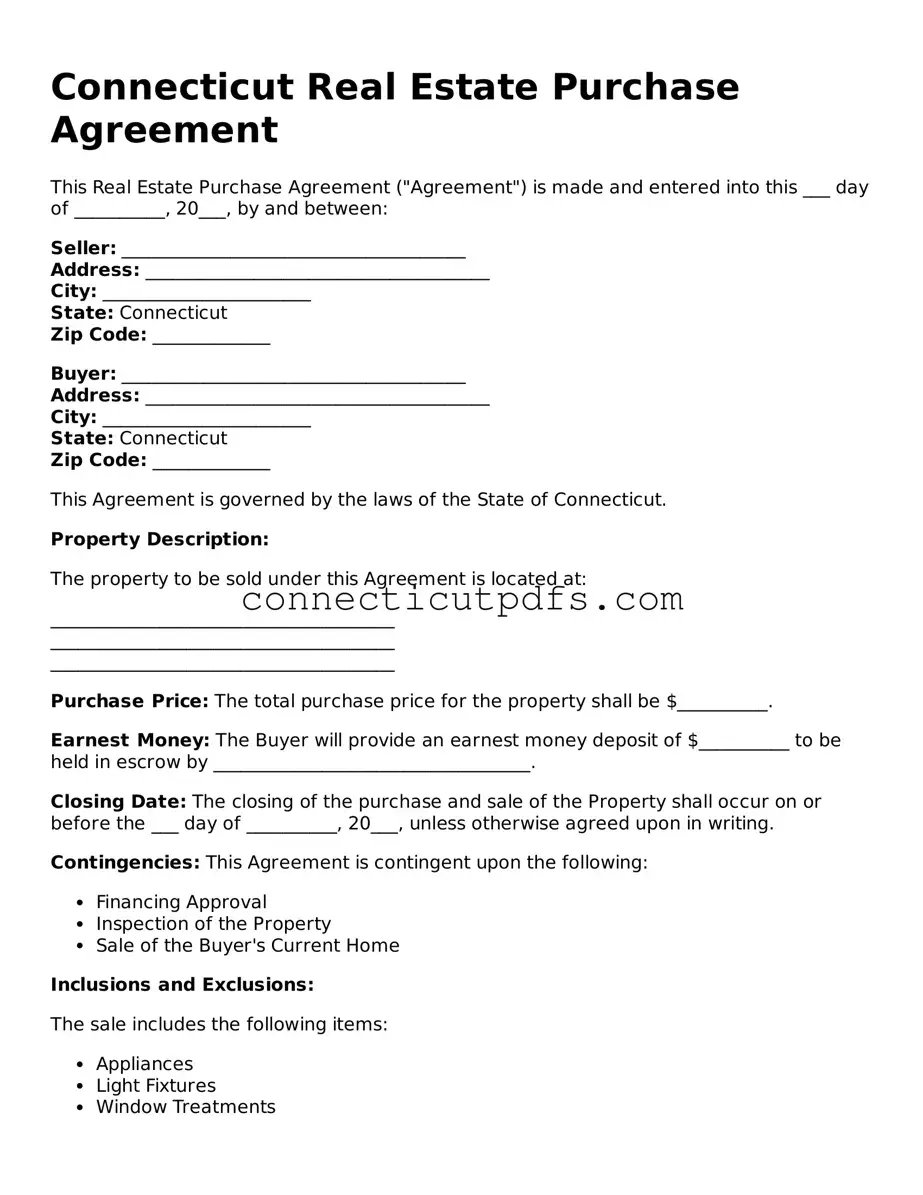Connecticut Real Estate Purchase Agreement
This Real Estate Purchase Agreement ("Agreement") is made and entered into this ___ day of __________, 20___, by and between:
Seller: ______________________________________
Address: ______________________________________
City: _______________________
State: Connecticut
Zip Code: _____________
Buyer: ______________________________________
Address: ______________________________________
City: _______________________
State: Connecticut
Zip Code: _____________
This Agreement is governed by the laws of the State of Connecticut.
Property Description:
The property to be sold under this Agreement is located at:
______________________________________
______________________________________
______________________________________
Purchase Price: The total purchase price for the property shall be $__________.
Earnest Money: The Buyer will provide an earnest money deposit of $__________ to be held in escrow by ___________________________________.
Closing Date: The closing of the purchase and sale of the Property shall occur on or before the ___ day of __________, 20___, unless otherwise agreed upon in writing.
Contingencies: This Agreement is contingent upon the following:
- Financing Approval
- Inspection of the Property
- Sale of the Buyer's Current Home
Inclusions and Exclusions:
The sale includes the following items:
- Appliances
- Light Fixtures
- Window Treatments
Any items excluded from the sale are:
- ________________________________
- ________________________________
Signatures: This Agreement shall be signed by both parties below:
_______________________________
- Seller
_______________________________
- Buyer
This Agreement shall be binding upon the parties and their respective heirs, successors, and assigns.
